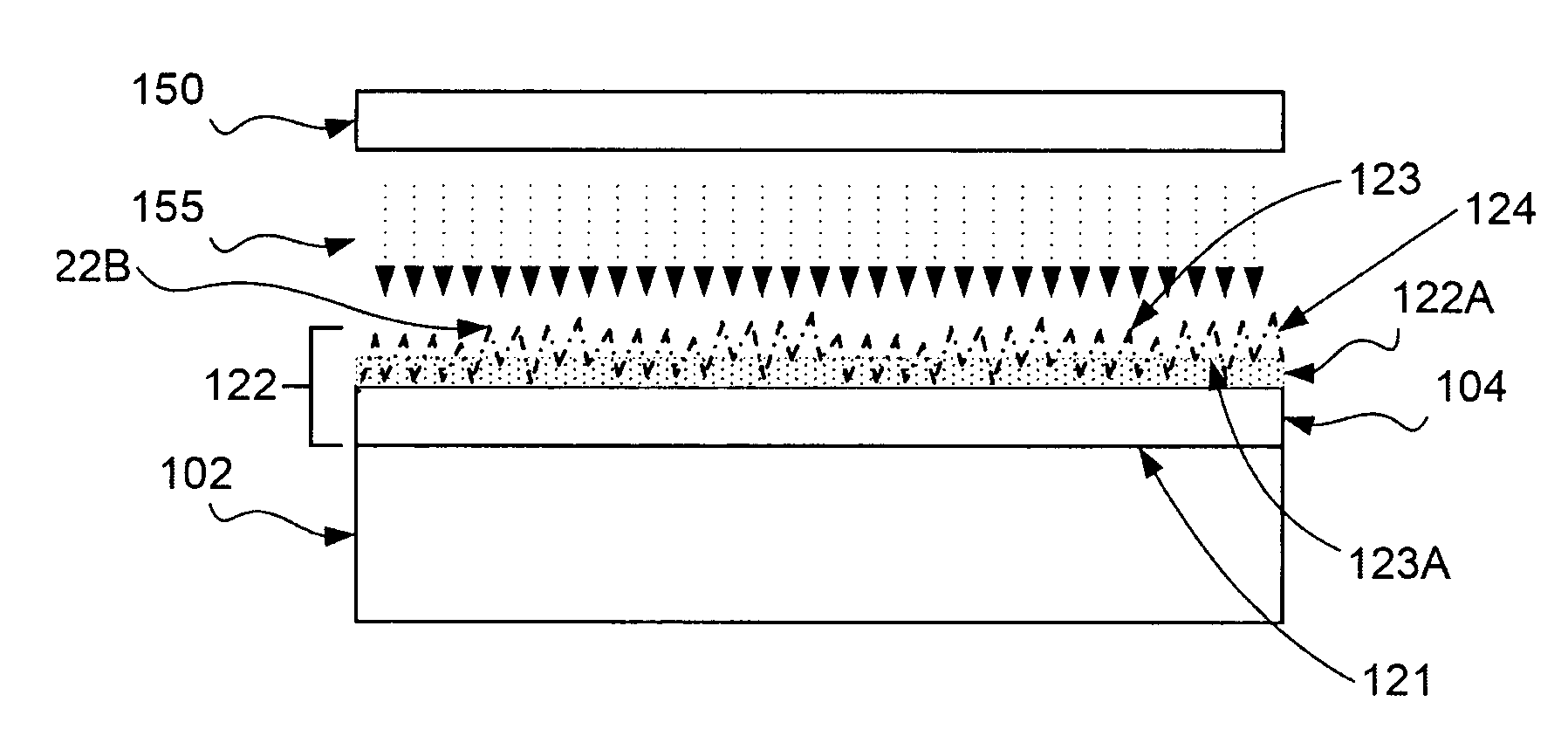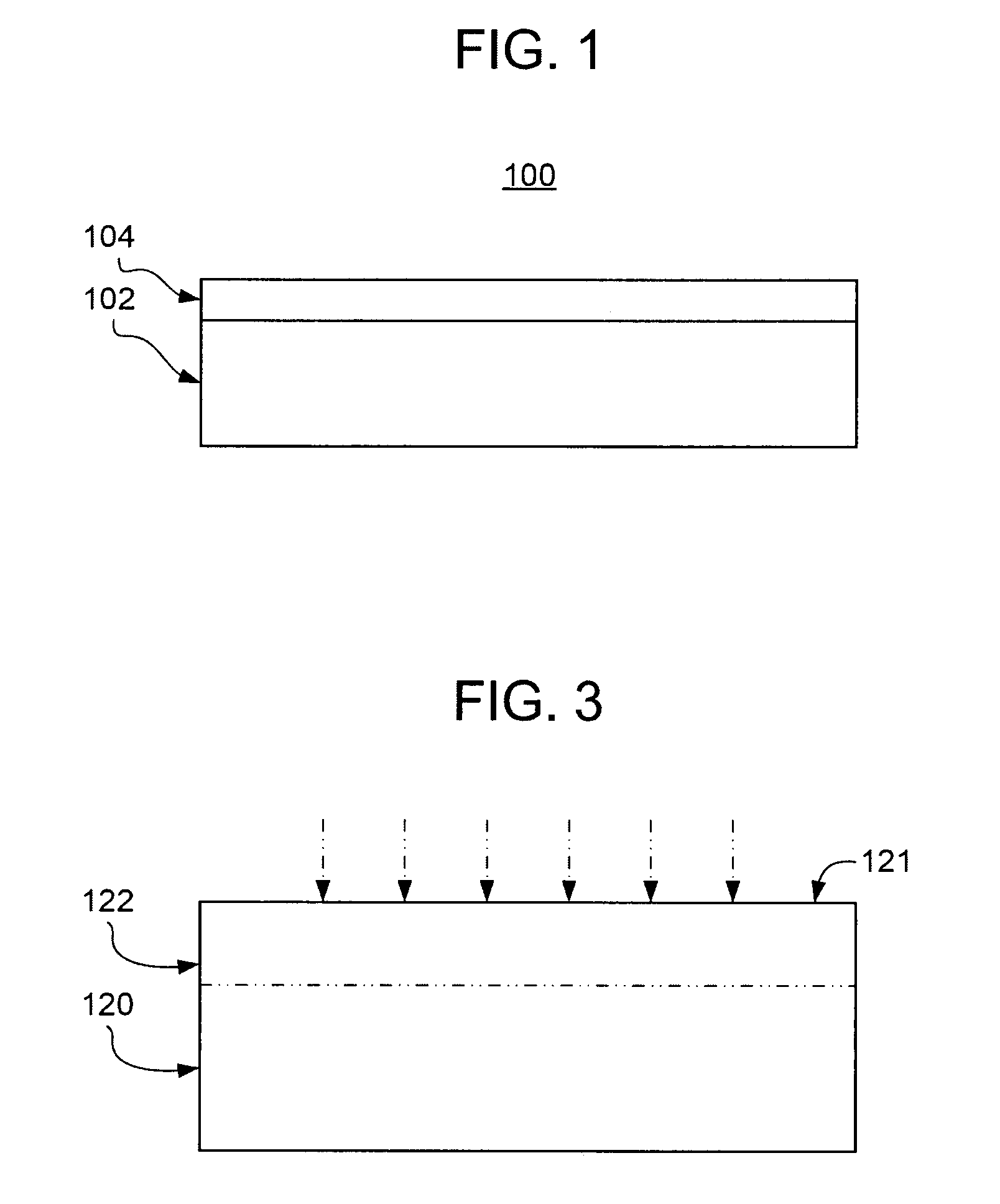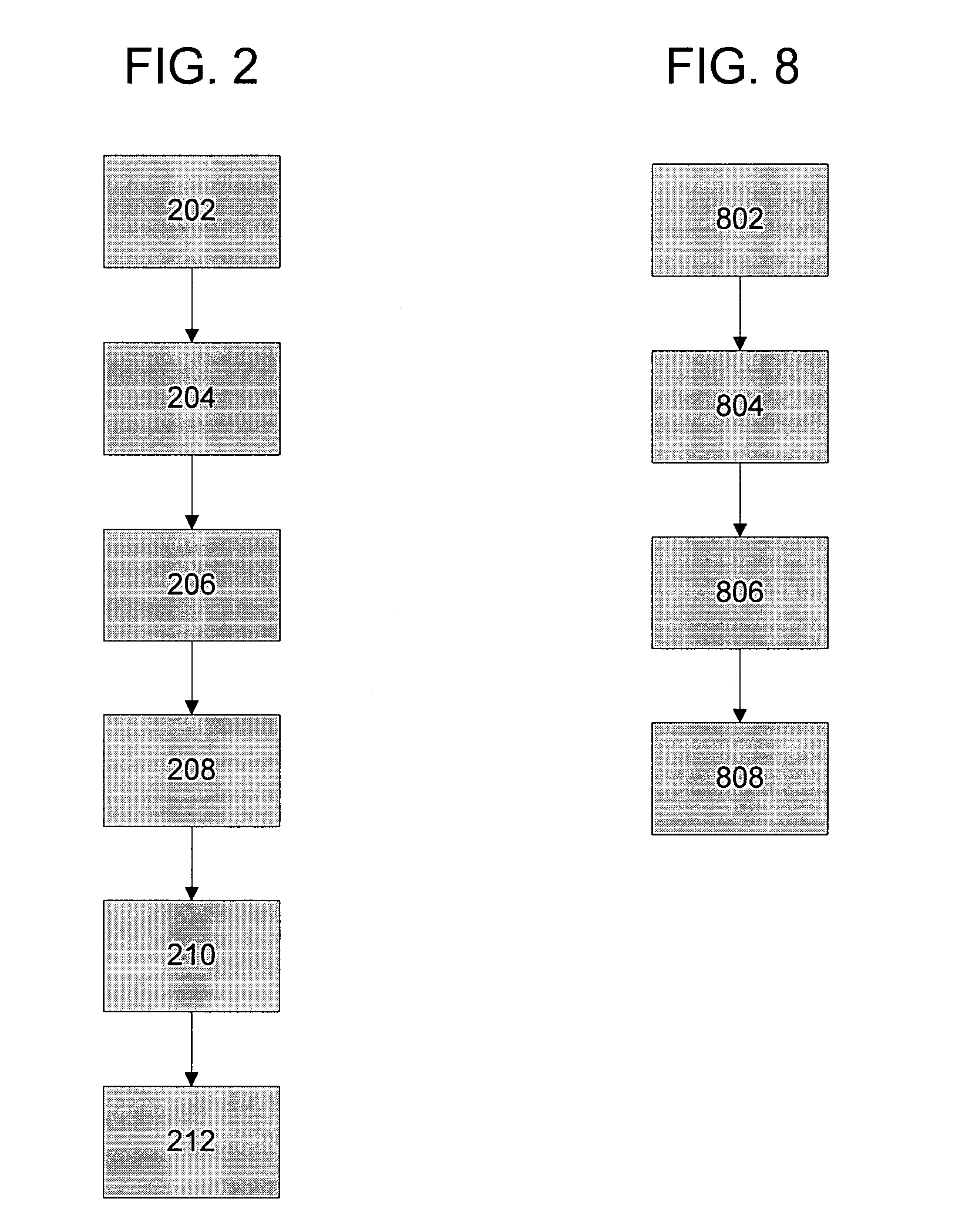Semiconductor on insulator structure made using radiation annealing
a technology of semiconductors and insulators, applied in the field of semiconductoroninsulator systems, methods and products of manufacture, can solve the problems of inability to meet the requirements of the application of the substrate, inability to meet the requirements of the substrate, etc., to achieve the effect of improving the overall manufacturing yield, and low step yield
- Summary
- Abstract
- Description
- Claims
- Application Information
AI Technical Summary
Benefits of technology
Problems solved by technology
Method used
Image
Examples
examples
[0115]A series of experiments was conducted to demonstrate the applicability of the aforementioned laser annealing process on an SiOG structure. An SiOG structure 100 with a 500 nm thick silicon exfoliation layer 122 was exposed to radiation 155 of excimer laser 150 at 400-1250 mJ / cm2 for 1 to 100 pulses. The excimer laser 150 used was a XeCl Excimer Laser from Lambda Physik, operating at up to 100 Hz with 28 nsec pulses of 308 nm light. The penetration depth of 308 nm wavelength UV light into silicon is only a few nanometers, which results only in the melting of the top part of the silicon layer, if energy density of the laser beam on the silicon surface is properly chosen. The laser was used with an optical system, including homogenizers, to produce a uniform 5 mm×0.8 mm beam. Step-and-repeat exposure was used in the examples in the present application to expose areas larger than the beam size. Similar laser energies are sufficient to crystallize an amorphous silicon film, resulti...
PUM
 Login to View More
Login to View More Abstract
Description
Claims
Application Information
 Login to View More
Login to View More - R&D
- Intellectual Property
- Life Sciences
- Materials
- Tech Scout
- Unparalleled Data Quality
- Higher Quality Content
- 60% Fewer Hallucinations
Browse by: Latest US Patents, China's latest patents, Technical Efficacy Thesaurus, Application Domain, Technology Topic, Popular Technical Reports.
© 2025 PatSnap. All rights reserved.Legal|Privacy policy|Modern Slavery Act Transparency Statement|Sitemap|About US| Contact US: help@patsnap.com



